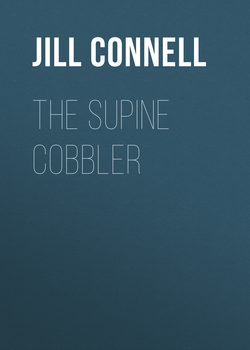Читать книгу The Supine Cobbler - Jill Connell - Страница 5
На сайте Литреса книга снята с продажи.
Playwright’s Note
ОглавлениеI had an abortion at the Ottawa Morgentaler Clinic in June 2011. I had just graduated from the National Theatre School of Canada’s playwriting program. I flew to Iceland the next day and lived in a fishing village, working with children and writing. Two months later, I flew to Fredericton, New Brunswick, where the first reading of some early writing took place – what I then called The Abortion.
I grew up watching Westerns, especially the revisionist Westerns. I studied antiheroes and outsiders. For a long time I wanted to be a man when I grew up. I wanted to be a person with a story. Westerns are gritty and unapologetic when it comes to life and death. They have swagger and emotional range. They deal in landscape – interior, social, and natural. I wanted to use this classic male storytelling genre to tell a hero myth for girls.
Abortion is a prevalent procedure but goes largely unseen. I was struck by how it is a decisive action – a reckoning with the self, yet very much in relationship to others, and to society. The opposite of an erasure, it takes you forward in time. I am interested in the information that comes to us through the body. The procedure is the height of acknowledgment that the abortion is real. I set out to put this action onstage.
This play took four years to create. It was, I think, the hardest thing I’ve tried to make. Many of my collaborators joined me very early on and are central to this play’s existence. Still, it was, at times, solitary, harsh work. The more I worked on this play, the more I felt like an outsider. Making this play also broke my heart. I stand by it the same way I stand by my abortion: with deep association and affection for my choices, but, also, a kind of astonishment and sadness.
I wrote this play for five women because I was interested in what would happen if there were only female voices speaking onstage. I had rarely experienced this in the theatre and I wondered how it would feel. The Supine Cobbler mentions only notorious men – a reflection of the stories that continue to dominate our culture. Yet it is profoundly not about them. My political motivation was to put an abortion procedure onstage without commentary; to give voice to women without commentary. To let these things simply be.
Directing this play was not the original plan and I’m not sure that’s how I would describe what I did. I could not hold all the edges of this piece. Luckily, I did not have to. I created this play for and with the women who originally performed it. It is a piece about chaos and disappointment and loneliness and desire, and it works best when it goes faster than us. I get a lot of joy out of things I do not fully understand. This way I can keep thinking about them for a long time.
In order to stage this play I worked closely with Montréal choreographer Tedi Tafel. We prioritized a physical practice based on listening and impulse that we then attempted to offer live. Working in this way was deeply pleasurable; it surprised me constantly. Often we didn’t know how to proceed. How to deal with guns, the weather, obscuring the Cobbler’s name? How to know where to stand? We created structures and containers so we could work in the unknown. It felt dangerous and vulnerable. I asked the performers to bring that feeling into their performances. The job was not to explain anything to the audience, but to follow the story and their impulses within it. We could not assume to understand the moment before it arrived. Things change in an instant.
To support this practice, our technical elements were operated live. Lights were moved and focused by the performers and stage manager. Music was a live band. Our venue was a warehouse by the lakeshore in Toronto. The sound of trains permeated the building every five to ten minutes. This was all part of the deal. We did not attempt to repeat the same thing twice. Some things would succeed and some would fail. We accepted this so that the piece might succeed as a whole, as an offering that was alive.
The Supine Cobbler is an ensemble piece. It is a contemporary clinical abortion in the spirit of a Western. The Cobbler has the abortion. She is our centre. This is her experience. The performers do not leave. They stay to witness, and to hold the space for this event. This is the audience’s role, too.
This is a play about love. It is about trying to have integrity in a world you don’t understand. We live in lawless times. Things are exquisite and devastating and totally normal. But you cannot abandon the world, so you write this experience down. You gather people around it, you try things, you invite an audience, you keep trying. It is true and flawed and we attend to this.
The task of embodying these characters is beyond what can be written in words. Different information is accessed in the body, in an ensemble, and in the act of public witness. This text is a map for finding that.
Jill Connell
January 2017
